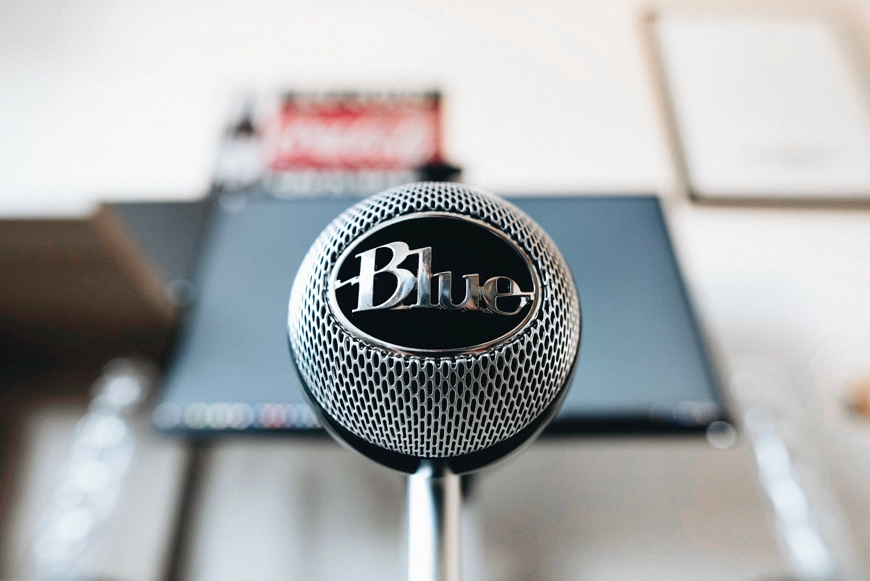
The 100$ Podcast Setup
You are probably wondering, how much does it cost to start a podcast? Do I need hundreds, if not thousand of dollars worth of equipment to sound professional? Is it possible to start a podcast on a budget?
Yes, you can start a podcast in a tight budget, for 100$ or less. That assumes you already have a computer and an internet connection.
So, how can you start a podcast for 100$ or less?
Equipment
In professional audio studios audio captures from a microphone travels through a chain of hardware.
Microphone → Preamp → Audio Interface → Computer
However if you are starting a podcast on a budget you can get a microphone that has a build-in preamp, audio interface and connects directly to your computer through USB.
Chances are its preamp won’t be the most high quality one but the audio will be good enough for your podcasting needs.
Option 1: Blue Snowball USB Microphone
The Blue Snowball USB Microphone is a decent option.
It will be the only piece of hardware you will need to start podcasting.
You can even put it in Omni directional pattern which means that it will pick up sound evenly all around the microphone. That way you will be able to record multiple hosts without getting additional equipment.
It can be plugged in directly via USB to your computer and doesn’t require drivers installation.
It comes with a small tripod so you can set it up on your desk.
The Blue Snowball USB Microphone costs around 70$ on Amazon.
Option 2: Audio-Technica AT2005USB Cardioid Dynamic USB/XLR Microphone
The Audio-Technica AT2005USB microphone is another solid choice for podcast recording.
It features both a USB output, so you can plug it in to your computer directly, and an XLR output, in case you decide you want to get an external audio interface in the future (which will include better built-in preamps).
The package includes a stand clamp, a tripod desk stand and a mini USB cable (3m).
Compared to the first option, it only has a Cardioid polar pattern which means recording more than one host at a time will be difficult. The Cardioid patterns records only in the front of the microphone and rejects sound from the sides and the back.
The AT2005USB also has a headphone jack, in which you can plug your headphones to monitor the audio, as well as an On / Off switch to quickly mute the audio.
It is a ~79$ microphone, requiring no drivers. Just plug it in your computer and you’re ready to go.
Software
There’s many commercial software options, like Adobe Audacity, a commercial audio editing suite, or Alitu, a software that claims to be “the quick and easy way to make a podcast”, but if you’re starting out they are more than what you need.
Audacity
Audacity is a totally free and open source cross platform audio software.
It has more than enough features to record, edit and export your podcasts.
Also it is featuring some basic (but powerful) audio effects. Its built in equalizer and compressor are more than enough to get a decent mix of your original audio.
It is simple enough and you can learn the basics in a couple of hours, yet it is powerful and you can dive deeper later.
Skype
Skype is a well known voice and video calls software by Microsoft.
You most probably have an account, as well as the people you’re planning to interview.
It has good enough audio quality and low latency, making a great choice for interview calls.
There are a couple of software to record voice calls via Skype but I’d highly recommend each one of the hosts to record their audio separately (in a lossless format compared to the compressed audio coming from Skype) in Audacity and then to transfer them to the editor for mixing resulting in higher final quality.
WeTransfer
WeTransfer is an online file transferring service.
Be aware that you can’t directly email big audio files, as email providers have some strict file attachment limits. Instead you can use WeTransfer to email a link to the recipient.
With the free plan you can send up to 2gb files in size and emailing or copying the link.
That way your podcast editor will have a high quality copy of the audio track to work with.
Alternatively you could use a service like Dropbox or Google Drive.
Podcast Hosting
There’s many podcast hosting platforms out there, and each one has similar features.
A podcast hosting platform is responsible for keeping your podcast files and metadata, and generating an RSS Feed that will be submitted to podcast directories like Apple Podcasts or Spotify to list your podcast.
Podcast directories will not host your audio files and you can’t upload a podcast directly to their apps.
Here we will recommend our own service, Nightcast. It is a complete toolkit for podcasters and for people or businesses that want to build an online audience. We even have a free plan to start your podcast today.
Final Thoughts
What you have to say (plus creativity) is more important than equipment.
It’s easy to procrastinate researching equipment and spending a lot of money.
Well, don’t do it.
Get a basic microphone, some free software and start today.
Your ideas are worth spreading!
Want to learn more about starting a podcast? You can read our in depth how to start a podcast guide, which details every step from planning, making a podcast website and sharing your first episode to the world.